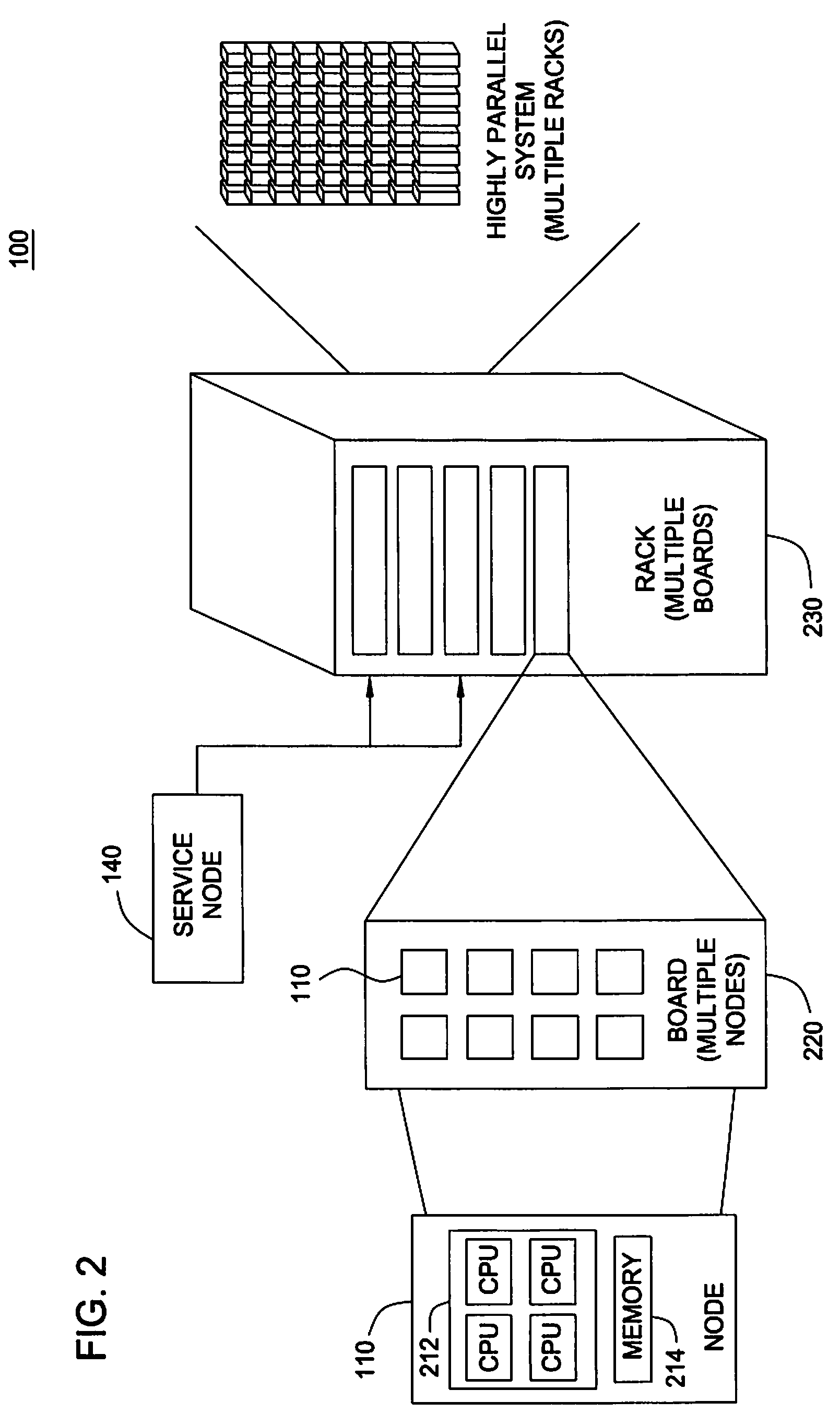Parallel computing system using coordinator and master nodes for load balancing and distributing work
a computing system and coordinator technology, applied in the field of data processing, can solve the problems of work units by masters that can easily become bottlenecks, work units consumed by workers, and inability to scale well, so as to eliminate the bottleneck of a single master without reducing the work imbalance
- Summary
- Abstract
- Description
- Claims
- Application Information
AI Technical Summary
Benefits of technology
Problems solved by technology
Method used
Image
Examples
Embodiment Construction
[0025]Embodiments of the invention provide a method for parallel application load balancing and distributed work management. In one embodiment, a hierarchy of master nodes may be used to coordinate the actions of pools of worker nodes. Further, the activity of the master nodes may be controlled by a “coordinator” node. A coordinator node may be configured to distribute work unit descriptions to the collection of master nodes. If needed, embodiments of the invention may be scaled to deeper hierarchies. For example, a master coordinator may be used to coordinate the activity of a group of coordinator nodes (which in turn manage a group of masters, which themselves manage a pool of worker nodes). At higher levels of the hierarchy, the data package managed by a node is simplified, thus the volume may be larger without creating a bottleneck. For example, the coordinator node may be configured to process work unit descriptions (i.e., metadata describing a work unit), where the master node...
PUM
 Login to view more
Login to view more Abstract
Description
Claims
Application Information
 Login to view more
Login to view more - R&D Engineer
- R&D Manager
- IP Professional
- Industry Leading Data Capabilities
- Powerful AI technology
- Patent DNA Extraction
Browse by: Latest US Patents, China's latest patents, Technical Efficacy Thesaurus, Application Domain, Technology Topic.
© 2024 PatSnap. All rights reserved.Legal|Privacy policy|Modern Slavery Act Transparency Statement|Sitemap



